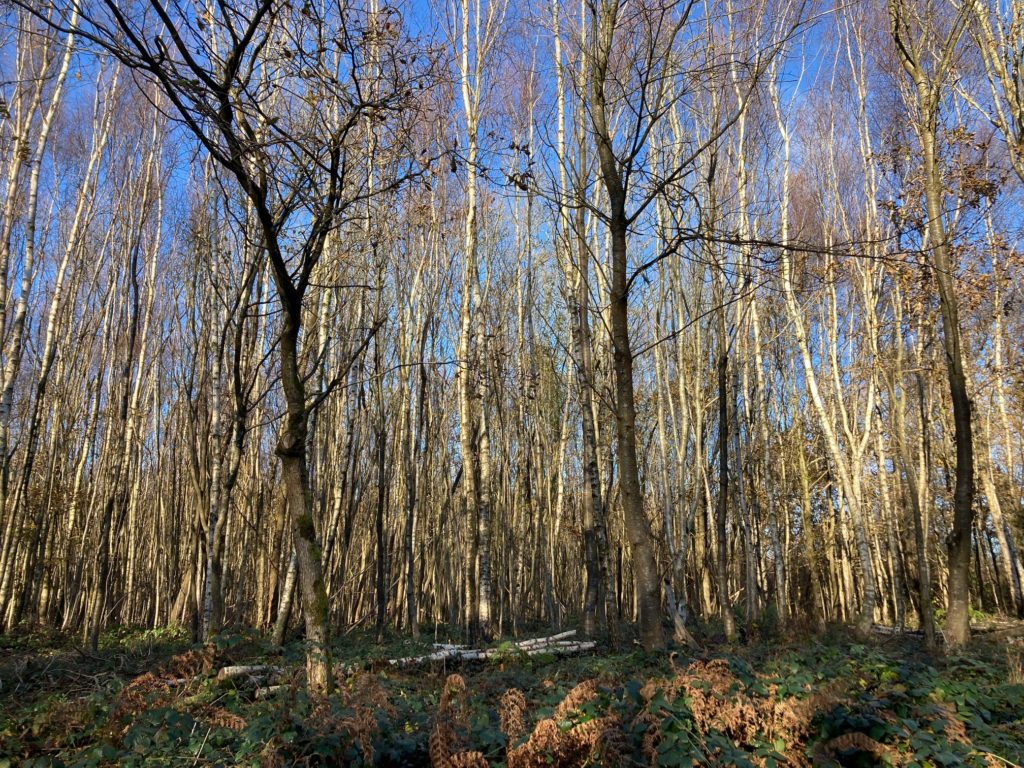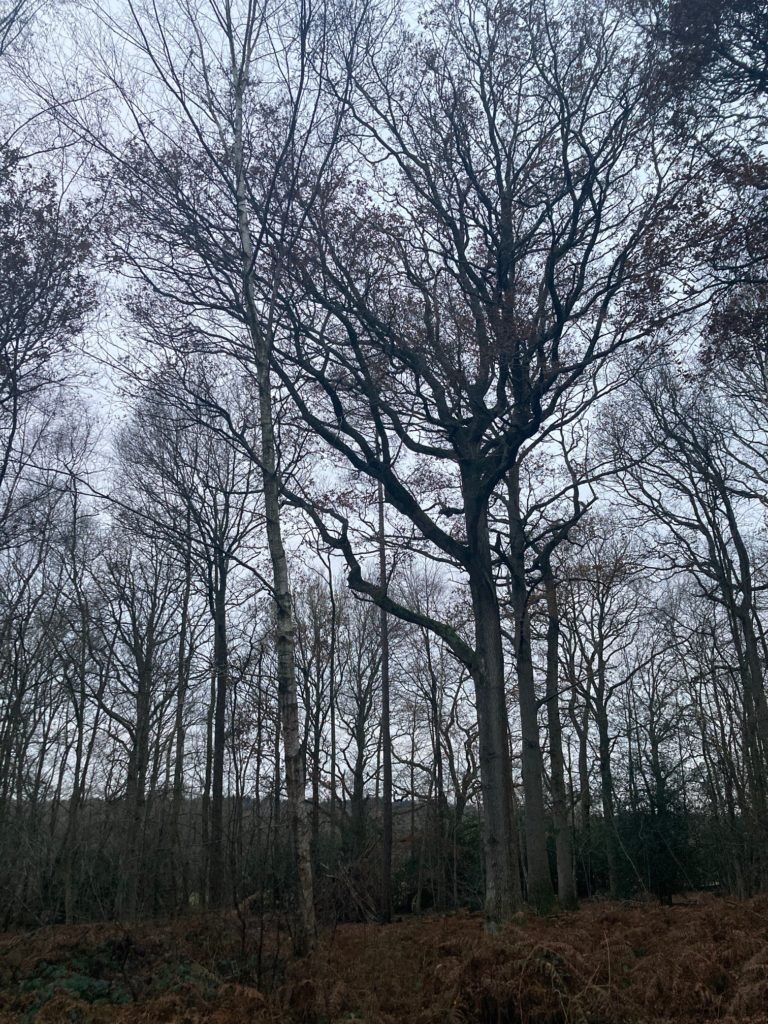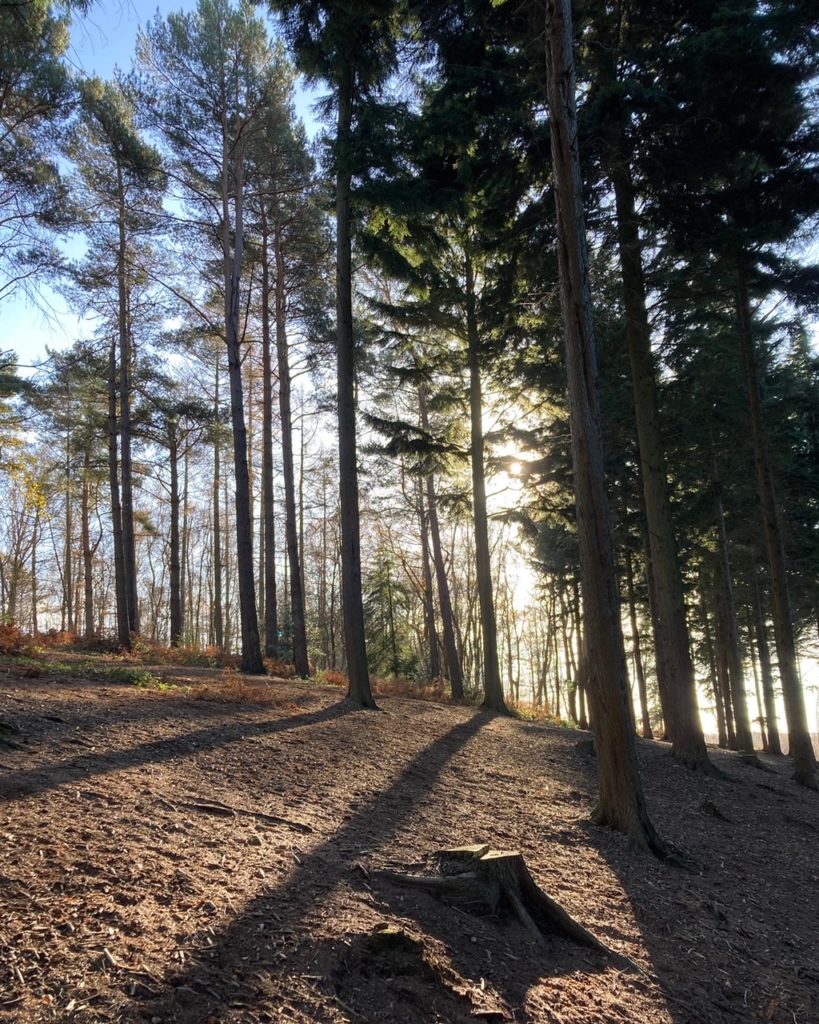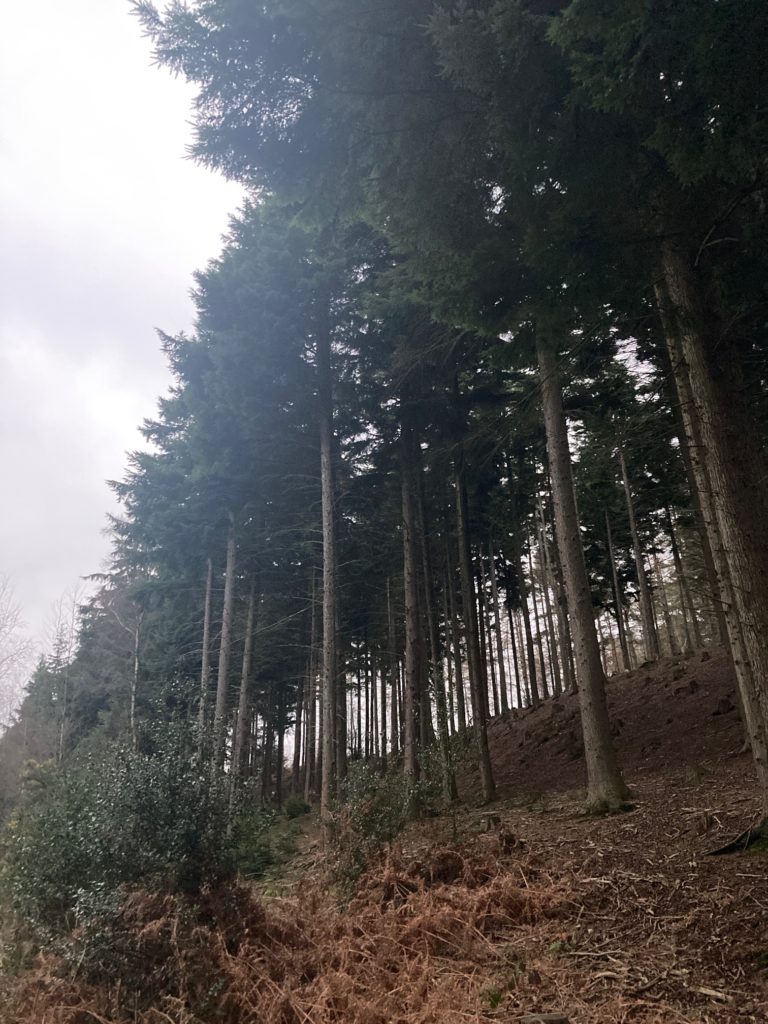After the Fall: a brush with a mossy log reminds Mark Hooper of his mortality.

I had a grand plan. I was going to embark on a series of walks that led me through not just local geography but history too, allowing me to go off on rambling ruminations, letting my thoughts meander with the pathways.
It was going to be great.
The first route was going to take me to the barren Wiltshire countryside, taking in Stonehenge and Avebury, standing stones and long barrows. But alongside the obvious ancient landmarks, I wanted to weave in recent stories of social upheaval — the Battle of the Beanfield, the Poll Tax Riot, how the Enclosures Act had sinister echoes in the Criminal Justice Bill (or — here comes the pullquote — how the sound of the 303 was forged along the A303). Just to be pompous about it, I thought I could explore what it means to be British by seeing how the landscape has shaped us, and how we have shaped it.
The first of these walks began in the Sussex countryside, after I’d visited some newly found friends, Graham and Julie, who were that rare breed of people who you just click with and relax into from the outset. Their house is a traditional black weatherboard building they’d renovated themselves until it looked like Derek Jarman’s Prospect Cottage on stilts, with views across gentle valleys towards the medieval village of Mayfield on the horizon.
It was a good evening. They played Kate Bush and Virginia Astley for a start. And then we watched three hours of Get Back and drank red wine, gasping and cooing at every new, tiny revelation until we couldn’t keep our eyes open.
After a night with new friends came a new dawn in unexplored woods. They woke up early, as people who live in the middle of nowhere tend to do, which suited me perfectly. It was a bright, sharp autumn morning — perfect weather for a walk, even if the ground was a bit sodden from the overnight rain. As they headed off to work, I drove to my start point. I won’t give you the exact route because, inspired by The Book of Trespass by Nick Hayes, my walk involved a bit of not-exactly-lawful rambling through private land. It was only a small shortcut to some well-trodden paths, you understand, but I realised that if I used the car park for an out-of-town farm shop and cut through some the woods, I could reach the line of trees I’d been eyeing up for months.

This was the best bit of the walk by far (which, given what transpired later, isn’t saying much). There’s something about making your own trail that feels more like real walking, venturing into the wild on your own rather than following carefully maintained signposts. Admittedly, in this case that involved picking my way through the detritus of fly-tipping, but once I was past the shopping trolleys and coffee cups, nature began to reveal itself. The dense undergrowth gave way to clearings and copses, soon opening out onto fields with stunning views across the Sussex-Kent border.
Eventually, I stumbled onto more obvious signs of civilization. A pond with a bench overlooking it, and beyond it, a path wide enough to drive a car down. I suddenly became aware that I wasn’t alone, and self-consciously crashed through the bracken, down the slope towards a man walking his dog, who looked up at me, a little startled.
‘Is this your land?’ I asked. It seemed like a good tactic.
He looked confused.
‘Is this your land?’ I asked again.
‘My land? No. Why?’
I explained I’d got lost and wasn’t sure where I’d ended up. Half truths.
Deciding I was just a bumbling fool rather than any sort of threat, he visibly relaxed, and gave his dog a reassuring pat.
‘Oh no, you’re alright,’ he said. ‘I’ve been walking here since I was a kid.’
Offering him my best idiot wave, I jumped down onto the path and carried on.
It was a good walk. The sunlight kept shifting with the clouds, picking out new patches of landscape. The atmosphere changed with the woods, as silver birches gave way to towering firs, and then the thicket grew denser. I realised I was off the path again, but I ploughed on, then, not wanting to overdo it, headed back towards the car park. I could have retraced my steps exactly, but instead I made a beeline through the woods. Except this time the private land was edged with barbed wire, so I followed the boundary, waiting for a gap and a way in. The ground turned boggy underfoot. I had to double back in places, using fallen branches to step on for support. Finally I found a clear route ahead, marked by a moss-covered tree that had crashed into the thicket. Not being able to see the ground on the far side, I did the sensible thing and stepped onto the fallen trunk rather than risk sinking in more bog.

And then it happened. I had that instant sensation of not knowing what I’d done, and yet understanding perfectly what I’d done. I was simultaneously dazed but super-aware: of my surroundings, of my situation, of my body.
When I stepped onto the trunk, my foot had gone from under me, sliding on the wet, mossy surface and slinging my body forwards. I’d ended up lying lengthwise, hugging the tree. The problem was, protruding from this was the broken stump of a branch, which was now resting against my chest, directly under my heart. I wouldn’t want to use the word ‘embedded’, but I definitely felt wedged in. I was winded, but I wasn’t sure if this was just shock. I eased myself up and off the tree with my hands. I took a deep breath. It hurt, but I could breathe.
There was no wheezing sound. Is that something you’re supposed to check for? I had no idea. All I could think of was a spoof letter I’d once read in Viz, saying that if you’re shot in the lung, you should lie with that lung closest to the ground, so your good lung doesn’t fill up with blood. It didn’t help, but it made me laugh. That hurt too.
Everything was in slow motion. It’s a cliché, but clichés are normally rooted in experience. And I was rooted to the spot in more ways than one. I tentatively touched my chest where it hurt, just above the sternum. It hurt. Obviously.
I knew this was a bad place to injure yourself. All your ribs connect there. It’s next to your lungs and over your heart. All of these things are important parts of the body. My mind ran through a series of what ifs. What if a rib had punctured a lung? What if the stump had punctured my heart? What does that mean? How would it feel?
I got myself into a kneeling position and — slowly — braced myself against the tree and lifted myself to my feet. I took another breath. It still hurt. I unzipped my jacket (Barbour, lined). I tried to lift my sweater and t-shirt up to take a look, but the angles were all wrong. Every time I got my arms in the right position, I winced and gave up. I slipped my hand under my t-shirt and retrieved it: no blood. Did my breastbone feel weird? Yes. How should it normally feel?
Amidst this slo-mo body MOT, my mind was whirring at feverish speed. I needed to move. I was in shock. I needed sugar. Could I make it back to the car? I knew the adrenaline had kicked in, but I didn’t know how long it would give me. And, let’s be honest, I was still lost, because I’d broken the first rule of American Werewolf and strayed from the path.

Through the bushes, I saw a car speed past. So I was close to the road. I made my way there as fast as I could without straining anything — or misplacing my footing. I was further away than I had expected, but still close enough to the car park to reach it easily enough, fumble with my key fob, unlock the door and devour the packet of Haribos I’d bought for my kids.
I knew I needed to get myself to hospital quickly, but I wasn’t sure how capable I was of driving there. Funnily enough, it didn’t cross my mind to call an ambulance, even while I was consciously weighing up the chances of me passing out en route. So. I put my seatbelt on (sore, but manageable). I put the key fob in its slot and pressed the Start button (easy). I reached for the handbrake (impossible). I couldn’t physically lift my left arm in the right position. After a few false starts, I realised I could, with a little difficulty, reach across with my right arm and depress the handbrake that way.
When I got to A&E, the check-in person seemed concerned enough to fast-track me to the triage nurse, who seemed concerned enough to fast-track me for an X-ray. The doctor, bless her, didn’t seem too concerned. She asked me the same questions I’d answered twice already — How did I do it? What was I doing there? How did I get here? Where does it hurt? Could I do this? Or this? – and then pushed and prodded me. Nothing seemed broken, she reassured me, but we still needed to do an X-ray to determine what damage I’d done. Could I take my jumper off please?
No. I honestly couldn’t. Eventually — before she got the big scissors out — I managed to wedge my elbow into position and ease my head out of the hole. It hurt a lot. She took the X-rays, and asked me again what happened, like my story didn’t add up.
‘And the broken branch — was it sharp? Where were your hands? Show me where you landed on it. What were you wearing?’
I showed her my muddy, scuffed and frayed Barbour jacket. She gave me a funny look. ‘You know,’ she said, ‘If you hadn’t been wearing that, you’d probably still be lying face down in the woods, and we’d have an ambulance driving backwards and forwards along the road trying to work out where you were and how to get to you.’
Her words made me feel weird. Stupid maybe. Lucky, certainly. Bruised ego to match my bruised chest. (And, I should say, my bruise was an absolute belter — the size of a fist, right over my heart, in decaying hues of blue, purple, red and yellow.) But there was something else, something more fundamental: it made me feel mortal.
I’ve always walked. I’ve always had haughty ideas about how and why it’s important. But it never struck me that it might be a dangerous thing to do. That you could bleed to death 20 metres from a main road after slipping on a log. That people nearing their 50s do actually need to be careful if they go out for a walk. Still, you should have seen the bruise.